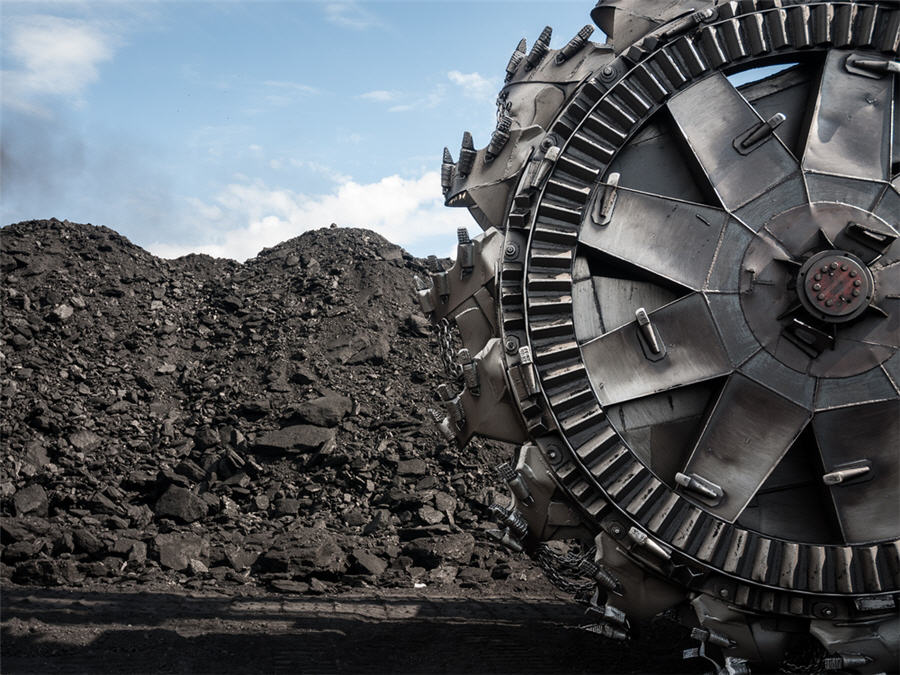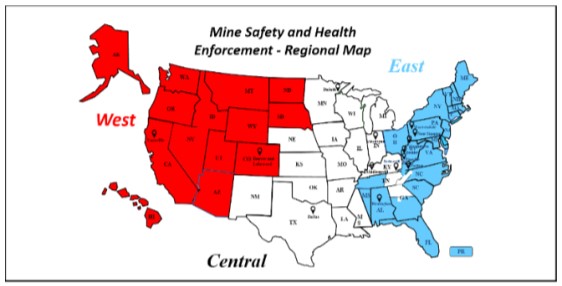Major MSHA reorg: New map shows three enforcement regions

As part of its “Blurring the Lines” initiative, the Mine Safety and Health Administration (MSHA) is now implementing plans to dramatically change its internal organization for enforcement and has released a map showing the new hierarchy.
Before, individual coal and metal/non-metal districts reported directly to a coal or metal/non-metal administrator at headquarters in Arlington. Now, MSHA will divide the country into three regions, with each district (whether coal or metal/non-metal) reporting to a single regional administrator.

The geographic regions will be Western, Central, and Eastern. In keeping with the Blurring initiative, each region will have a mix of both coal and M/NM mines. District managers will report to the region’s regional administrator. In the new scheme, districts will be re-named simply after the city where they are located (e.g., Warrendale).
While Tim Watkins will remain the national Administrator for Enforcement, his two deputies will now become two of the three regional administrators. Brian Goepfert, currently the deputy for M/NM enforcement, will move to Denver to be the Western Regional Administrator. Dave Weaver, currently the deputy for coal, will move to Dallas to be the Central Regional Administrator. MSHA currently has a job posting online to hire a third person as the Eastern Regional Administrator. It may appoint someone to fill the slot temporarily in the interim.
While this changes the oversight above the district level, MSHA does not currently anticipate moving more mines from one district to another after the changes made in the last couple years. There are currently 213 “cross-over” mines that have been moved across the divide between coal and M/NM (coal mines overseen by a metal/non-metal district and vice versa).
There is no particular date when the new regional structure will officially launch. Rather, it is rolling out continuously and gradually as various parts – especially the map and the new regional administrators – fall into place.
Will it make a difference to most mine operators?
While this is a big change for MSHA’s hierarchy, it remains to be seen whether it will have impacts on the ground that are noticeable to the average mine in the normal course of business. In most enforcement matters, mine operators do not involve MSHA personnel above the district office level. Moreover, having regional administrators closer to the districts could mean they are able to keep a closer eye on what takes place in the field. That could be helpful, especially in select areas where district management has struggled.
By contrast to this latest regional change, other Blurring changes likely have had much more day-to-day significance. The previous steps to move inspectors and districts across the divide between coal and metal/non-metal raised concerns that MSHA needed to roll out significant training and orientation to be sure inspectors and districts were familiar with the mines they are inspecting. Likewise, as the coal industry has declined in activity, operators have seen surplus coal inspectors being shifted to the metal/non-metal industry even though there has not been any need for more inspection time at M/NM mines. As a result, some operators have reported seeing more inspectors spending more inspection time at their facilities though safety and health performance remains consistent.
Avi Meyerstein is a Washington, D.C.-based partner with the law firm Husch Blackwell LLP. He leads the firm’s Safety & Health group.
More News
Anglo starts talks with banks on possible De Beers IPO
Anglo is pursuing a dual-track process in its effort to exit De Beers by trying to find a buyer for the struggling business.
March 28, 2025 | 12:19 pm
PDAC JV video: Golden Pursuit preps for discovery at sub-Arctic Gordon Lake, CEO says
A program to scan archived core using AI and expand geophysical surveys on the Wooferine-Lynk Zones is set to start soon.
March 28, 2025 | 11:35 am
{{ commodity.name }}
{{ post.title }}
{{ post.excerpt }}
{{ post.date }}



Comments